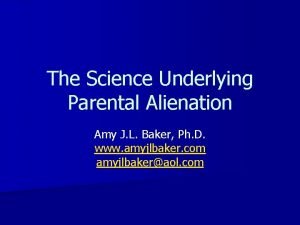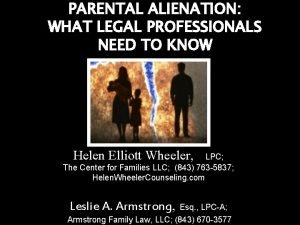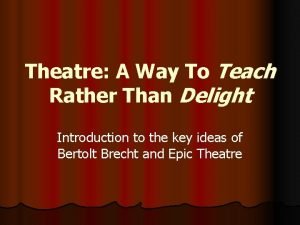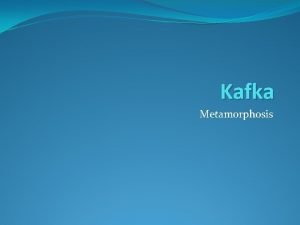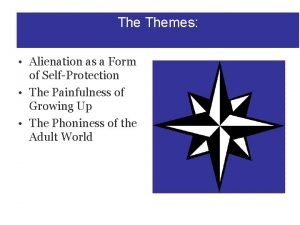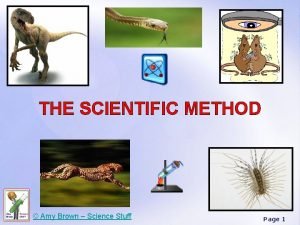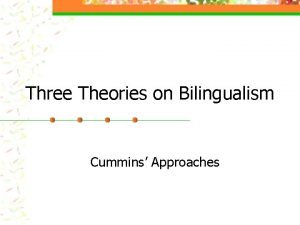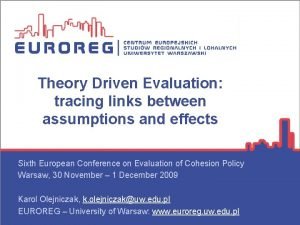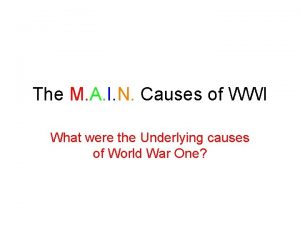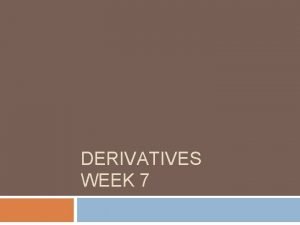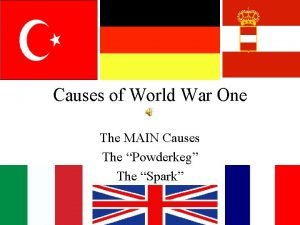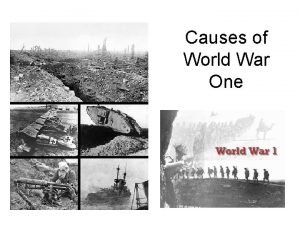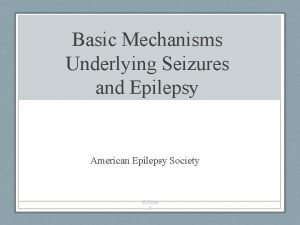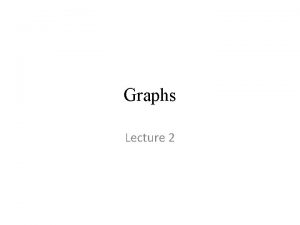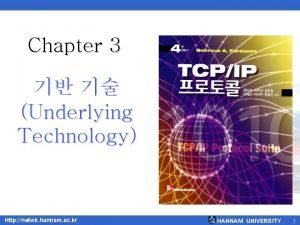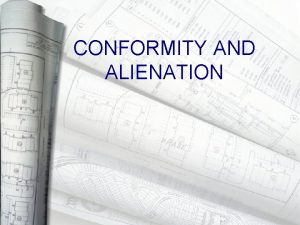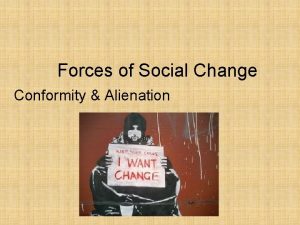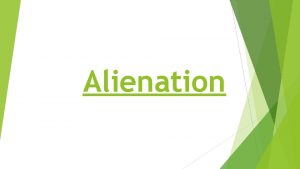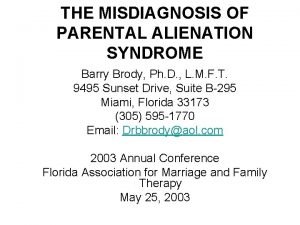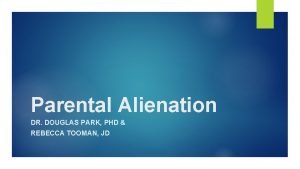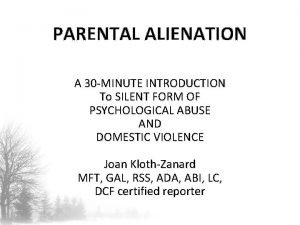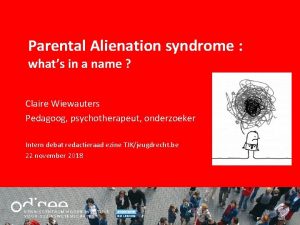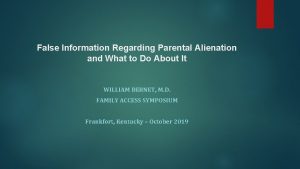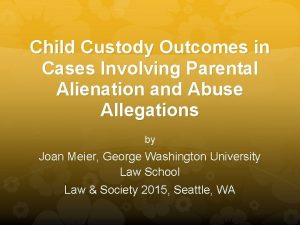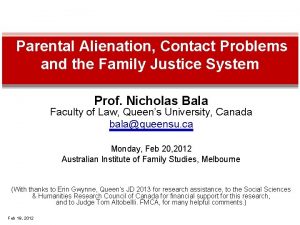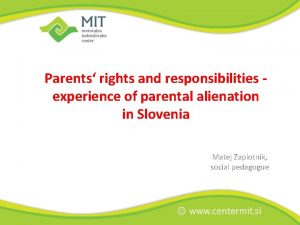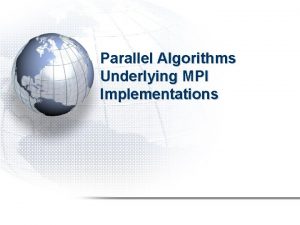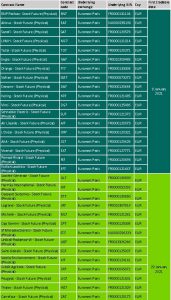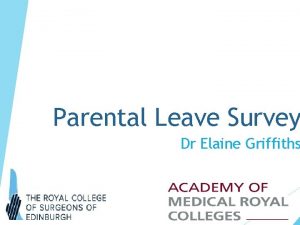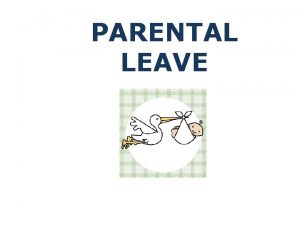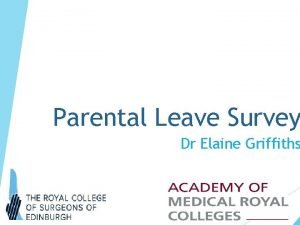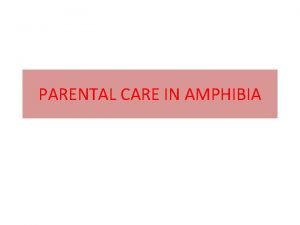The Science Underlying Parental Alienation Amy J L





























- Slides: 29

The Science Underlying Parental Alienation Amy J. L. Baker, Ph. D. www. amyjlbaker. com amyjlbaker@aol. com

Parental Alienation A child's unjustified rejection of a formerly loved parent, expressed as a set of specific child alienation behaviors, based on the alienating behaviors of the favored parent.

The Four-Factor Model Prior positive relationship with now rejected parent 2) Absence of abuse or neglect on the part of the now rejected parent 3) Use of alienating behaviors by the favored parent 4) Exhibition of alienation behaviors by child 1)

The Four-Factor Model Takes into account the behaviors of all parties. Ensures that an abused child is not mistaken for an alienated child

Factor 1: Prior positive relationship between the child and the now rejected parent Takes into account normative flaws of rejected parent – all parents are imperfect

Factor 2: Absence of abuse or neglect on the part of the now rejected parent Rules out alternative explanations for the child’s rejection of the targeted parent

Factor 3 Favored parent used many – not necessarily all – of the 17 primary parental alienation strategies. Evidence that the favored parent has engaged in the very behaviors that we know can result in a child’s rejection of the targeted parent.

Factor 4: The child exhibits many of the 8 behaviors of alienation Evidence that the child is exhibiting behaviors that are unique and specific to alienated children.

The Science: Alienating Behaviors Some children are susceptible to undue influence.

Influence Visual Cliff research: Infants can be coaxed across what looks like a dangerous cliff through positive cues from a parent. Will override their own perception. Steven Ceci: Children can be led to believe things happened to them when they did not, will embellish the false memory and will resist hearing that it was a false memory.

Influence Elizabeth Loftus: People can be influenced to remember things incorrectly through the types of questions asked about an event. Shaw and Porter: 75% of teens were coaxed into remembering a highly salient false memory. What “might have been” became “what was. ”

Influence Solomon Asch: People will mistakenly report the length of a line in order to conform to a group. Stanley Milgrim: People will inflict high voltage electric shocks to people when told to so by an experimenter.

Mechanisms of Influence Social pressure Visualization Suggestive questioning Repetition Persuasion/manipulation Patternicity Confirmation bias

Mechanisms of Influence in PA The 17 primary parental alienation behaviors of the favored parent Induce in the child the distorted belief that the other parent is unsafe, unloving, and unavailable and the distorted belief that the favored parent is the only one who truly loves and understands him/her.

Alienating Behaviors…. Results in cohesion/enmeshment with the Favored parent. Result in the child being willing to forgo the relationship with the targeted parent in order to please the favored parent on whom the child is now dependent.

Development of the BSQ Baker (2007) 40 adult children of parental alienation syndrome. Baker and Darnall (2006) 97 targeted parents.

Baker and Chambers (2011) 105 graduate students in New York City Those from separated/divorced families had statistically significant higher scores on all 20 items than those from intact families. Those who endorsed item 20 had statistically significant higher scores on all 20 items than those who did not.

Study Sample BSQ Alpha Intact Item 20 Outcomes Vs VS not non Item 20 Intact Baker and Ben Ami 2011 (73) 108 adult children of divorce in US . 96 Baker & Brassard 2013 (89) 222 9 th grade boys in NYC . 86 Baker & Verrocchio 2013 (92) 257 Italian N/A undergradu ates Baker & Eichler 2014 (91) 157 college N/A students in TX PM, selfsufficiency, selfesteem Yes PM and depression Depression, selfesteem, selfdirection, cooperation Yes PM

Study Sample BSQ Alpha Intact Item 20 Outcomes Vs VS not non Item 20 Intact Verrocchio & Baker 2015 (90) 739 adults in Chieti Italy . 94 Bernet, Baker & Verrocchio 2015 (97) 739 adults in Chieti Italy . 94 Baker & Verrocchio 2015 (101) 739 adults in Chieti Italy . 94 Yes PM and parental bonding Verrocchio, Baker & Bernet 2016 (104) 509 adults in Chieti Italy . 94 Yes PM, anxiety, and depression Yes PM and parental caring after controlling for marital relationship and marital status. All scales on the Symptom Checklist

Study Sample BSQ Alpha Intact Item 20 Outcomes Vs VS not non Item 20 Intact Baker & Verrocchio 2016 (112) 509 adults in Cieti Italy N/A Depression and state anxiety Verrocchio, Baker & Marchetti 2017 (114) 361 adults in Chieti Italy . 90 to. 94 Psychological maltreatment

BSQ Research 7 different samples 10 published papers 2, 353 participants New York, Texas, Chieti Adults and teens In every study: BSQ reliable and valid

The Science of Alienated Behaviors of a Child

Baker and Darnall (2006) 68 targeted parents Surveys of behaviors of children Vignettes Data supported theory that alienated children engage in specific behaviors

Baker, Burkhard and Kelly (2012) 40 children in high conflict divorce enrolled in treatment Baker Alienation Questionnaire (child version) 96% reclassification rate

Baker and Eichler (2016) 109 college students BSQ and adult version of BAQ ABs by the father was associated with rejection of the mother (high scores on the BAQ) and ABs by the mother was associated with rejection of the father. This association held up even after controlling for parenting capacity. That is, one parent’s alienating behaviors affected the child’s behavior towards the other parent over and above that parent’s own behavior.

Bernet, Gregory, Reay, & Rohner, 2017 4 groups of children: (1) 35 from intact families (2) 20 children of divorce (3) 16 neglected children and (4) 45 alienated children. Administered the PARQ Only alienated children had extreme scores for each parent.

Abused Children Do Not Exhibit These Behaviors 1. 2. 3. 4. 5. 6. Clinical writings Rat research Harlow research Foster children research Memoirs New research underway

Support for the Four-Factor Model Baker (in preparation) 68 mental health professionals rated 1 of 16 vignettes. . 91 inter rater reliability 100% of the pure alienation vignettes were coded as alienation. 81% of the pure non alienation vignettes were coded as not alienation.

Directions for Future Research BSQ studies conducted by other researchers around the world. More studies about the behaviors of alienated children. There is always more to learn…. .
 Amy jl baker
Amy jl baker Parental alienation lawyer logan county
Parental alienation lawyer logan county V effect theatre
V effect theatre Involuntary alienation in real estate
Involuntary alienation in real estate Brechtian alienation effect
Brechtian alienation effect Alienation in metamorphosis
Alienation in metamorphosis Brecht placards
Brecht placards Alienation as a form of self-protection
Alienation as a form of self-protection Occupational alienation
Occupational alienation Conformity and alienation
Conformity and alienation Marxist anthropology
Marxist anthropology Herbert spencer theory
Herbert spencer theory You are my favorite subject
You are my favorite subject Amy brown science answer key
Amy brown science answer key Amy brown science
Amy brown science Amy brown science
Amy brown science Threshold theory cummins
Threshold theory cummins Underlying theory in research
Underlying theory in research Militarism def
Militarism def Ter death certificate
Ter death certificate Underlying magic pitch deck examples
Underlying magic pitch deck examples Derivatives week
Derivatives week The underlying theme of the conceptual framework is
The underlying theme of the conceptual framework is Underlying causes of ww1
Underlying causes of ww1 Causes of wwi main
Causes of wwi main Ww1 cause
Ww1 cause Basic mechanisms underlying seizures and epilepsy
Basic mechanisms underlying seizures and epilepsy Underlying technology
Underlying technology Underlying undirected graph
Underlying undirected graph Underlying technology
Underlying technology
